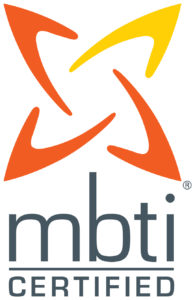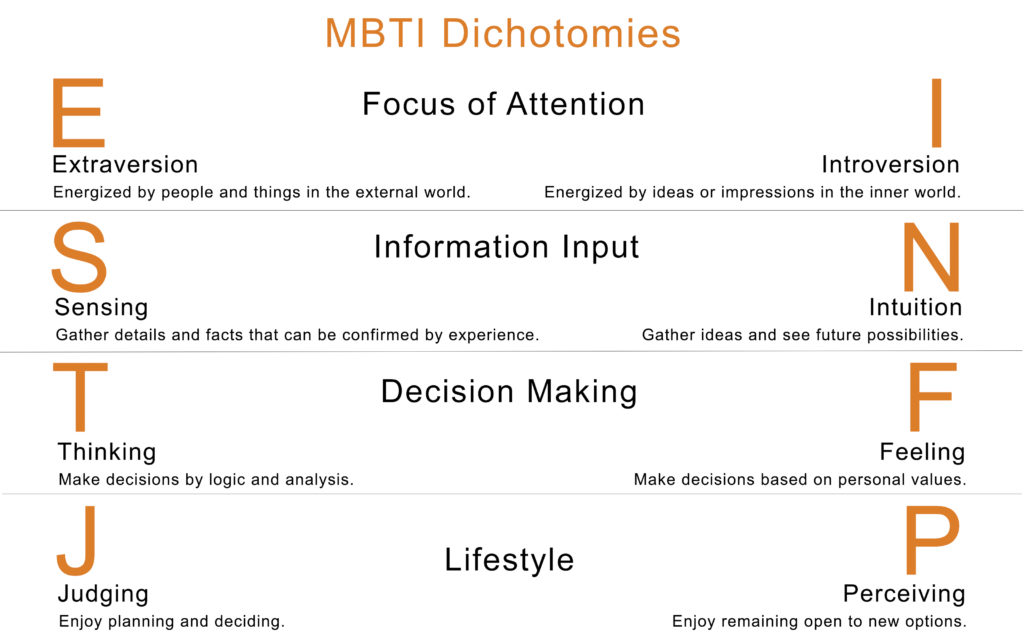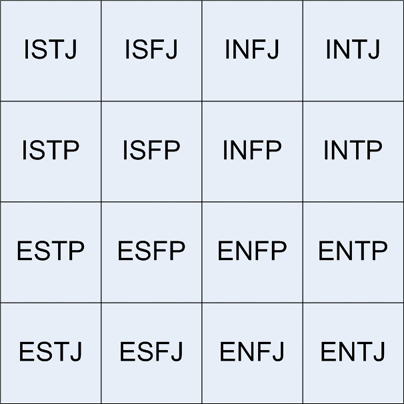The Myers-Briggs Type Indicator® (MBTI®) assessment is a short, self- report questionnaire used to measure and describe people’s preferences for how they like to focus attention, get information, make decisions and orient their lives. Created by a mother-daughter team, Katherine Briggs and Isabel Myers, the MBTI® instrument was designed to make Carl Jung’s theory of psychological types understandable and useful in everyday life.

The MBTI® instrument provides a versatile measure of personality that looks at eight personality preferences people use at different times. These eight preferences are organized into four dichotomous scales, which are illustrated below. After more than 50 years of research and development, the current MBTI® tool is the most widely used instrument for understanding individual personality differences. By taking the MBTI® instrument, millions of people have gained valuable insight about themselves and the people they interact with.

Why is the MBTI® instrument so popular?
- The MBTI® tool is an indicator, not a test, so there are no right or wrong answers.
- It sorts people into 16 broad personality types. Each type has its own strengths and challenges.
- The MBTI® tool looks only at normal behaviour. It does not measure or detect psychiatric disturbances, trauma, intelligence or maturity.
- You can share your results or keep them confidential.
- The MBTI® instrument gives results that are practical and can be used in everyday life.
What are the benefits of knowing your type?
- Greater understanding of yourself and others.
- Improved communication skills.
- Ability to understand and reduce conflict.
- Increased ability to manage change and reduce stress.
- Improved time management.
- Knowledge of your personal and work style and its strengths and development areas.
- Identify the jobs and tasks that give you satisfaction.
What to do When Taking the Assessment
Remember, there are no right or wrong answers to the questions in the MBTI® instrument. For each question, you should choose the answer that best describes the way in which you more often feel or act. Answer as you really are, not as you think you would like to be. Don’t try to force consistency. The MBTI® tool requires 20 minutes to complete and is best taken without interruption.
Things to remember
For you to make the most of your results, it is important to understand that the MBTI® instrument:
- Describes rather than prescribes; it delivers back to you in an organized form the preferences you indicated when answering the questions.
- Describes preferences, not skills or abilities.
- Considers all preferences equally important and valuable.
- Is well documented and researched with hundreds of scientific studies conducted over a 50 year period.
The Type Table
When you take the Myers-Briggs Type Indicator®assessment, the four preferences with which you most closely identify (one from each scale) are combined into what is called “type.” Altogether, there are 16 different personality types, which are shown in the type table below. Each type has its own set of preferred behaviors and personality functions.

As a certified Myers-Briggs practitioner, I will guide you through the process to verify your type and provide you with a series of exercises and explanations to make use of this information. The MBTI® instrument will help you to identify your strengths and unique gifts.
You can use the information to better understand yourself, your motivations, your strengths, and potential areas for growth. It will also help you to better understand and appreciate those who differ from you. The understanding and appreciation of the differences in the way people prefer to function can greatly enhance the effectiveness of how people relate to one another.